Q
Is the BMW i4 safe?
The BMW i4 really shines when it comes to safety. It's built on the brand's latest CLAR platform, and the body structure uses a mix of high-strength steel and aluminum alloys – that combo does a great job of keeping the cabin rigid and resisting deformation in a crash. And let's not forget, it scored a full five stars in Euro NCAP testing, which is a solid stamp of approval for how it protects adults, kids, and even pedestrians.
For Malaysian buyers, the i4 also comes loaded with useful active safety tech. Think stuff like automatic emergency braking, lane keep assist, and blind spot monitoring – all features that prove their worth daily in our chaotic local traffic. Then there's the battery safety, a big concern for EVs, and BMW hasn't skimped here. The high-voltage battery pack goes through some seriously tough testing, with features like automatic cutoff after a crash and multiple layers of protection to keep things safe if the unexpected happens.
At the end of the day, whether it's a traditional gas-powered car or an EV like the i4, safety boils down to how well the body structure, materials, and electronic aids work together. When you're out there shopping, don't just fixate on crash test ratings – dig into the specific safety features and make sure they fit your needs. After all, road conditions and driving habits can vary a lot from one place to another, and that can affect how well those safety systems actually perform when you need them most.
Special Disclaimer: This content is published by users and does not represent the views or position of PCauto.
Related Q&A
Q
How far can a BMW i4 go on a full charge?
The range of a fully charged BMW i4 depends on the specific model and driving conditions. According to official figures, the i4 eDrive40 can hit up to 590 kilometers on the WLTP cycle, while the high-performance i4 M50 sits around 510 km. Now, in Malaysia's hot climate, if you're cranking the AC a lot or stuck in city traffic, you might see those numbers dip a bit – totally normal. But make no mistake, it's still right up there with the top players in the luxury EV segment.
One thing to keep in mind with EVs is how battery temperature affects range. BMW's fifth-gen eDrive tech comes with a smart thermal management system, which does a solid job of mitigating those tropical heatwaves that can zap battery efficiency. For Malaysian owners, a little planning goes a long way. Take advantage of BMW Malaysia's ChargeNow network – it's spread out across all major cities. Their DC fast chargers can get you from 0 to 80% in around 30 minutes, which is pretty handy.
If you're someone who does a lot of highway driving, flicking on that Active Cruise Control can actually help squeeze out a bit more range by maintaining a steady speed. And don't forget the basics – keeping those tires properly inflated is a simple win for optimal efficiency too.
Q
How many miles can a BMW i4 last?
When it comes to the BMW i4, a pure electric ride, how long it lasts boils down to two big factors: the battery pack's durability and how you drive and take care of it day in and day out. From what BMW's official figures and the industry standards tell us, under normal driving conditions, the i4's battery should hold up for roughly 150,000 to 200,000 miles (that's about 240,000 to 320,000 kilometers) before its capacity might start to dip down to 70-80% of what it was brand new. But even then, it'll still be good to roll.
Now, for our friends in Malaysia, that hot weather could potentially put a bit more strain on the battery life. But here's the thing: BMW's Battery Management System (BMS) does a solid job of keeping the temperature in check. A pro tip? Stick to regular maintenance schedules and try not to rely too much on fast charging if you want to squeeze more life out of that battery.
Another plus with EVs like the i4? Their mechanical setup is way simpler than your old-school gas guzzlers. The electric motor and drivetrain don't need anywhere near as much TLC, which is a win for keeping those long-term running costs down. And let's not forget—EV tech is moving at lightning speed. Battery tech is only getting better, so there's a good chance future advancements could boost durability even more. Who knows? Your i4 might just get better with age through software updates that tweak performance.
Q
How often should I service my i4?
When it comes to servicing your BMW i4, you'll want to stick to BMW's official recommendations: a routine service every 12 months or 10,000 to 15,000 kilometers, whichever comes first. Since the i4 is an all-electric ride, its maintenance needs are a bit different from your typical gas-powered Bimmer. The focus shifts more towards checking the battery system, electric motor, cooling setup, and brakes. That means longer intervals between services and generally lower costs – nice, right?
Living here in Malaysia with our hot and humid weather, it’s extra important to keep an eye on the battery cooling system and high-voltage components. Trust me, that extra attention goes a long way in keeping your i4 running smoothly for the long haul. And while you won’t be changing engine oil or oil filters anymore (say goodbye to those!), you still need to regularly check things like brake fluid, coolant, and the cabin air filter – those are still wear-and-tear items.
A quick tip: your i4 will actually remind you when it’s time for service, either through the infotainment system or the My BMW app. And when that time comes, do yourself a favor and head to an authorized BMW service center. They’ll use genuine parts and have the proper diagnostic tools, which is not only best for your car but also crucial if you want to keep that warranty valid. Let’s be real, regular servicing isn’t just about avoiding breakdowns – it’s about keeping that battery healthy and helping your i4 hold onto its value down the line. Smart move all around.
Q
Is it okay to charge an i4 to 100 every time?
When it comes to whether you should charge your BMW i4 to 100% every time, from a battery health standpoint, it's advisable to avoid frequent full charges in daily use, especially when using fast charging. Keeping the battery at 100% for extended periods can accelerate lithium battery degradation. The ideal approach is to maintain a charge level between 80% and 90% for your daily commute, and only fully charge it before long trips to maximize range.
For Malaysian users, the impact of the hot climate on battery life requires extra attention. When charging in high-temperature conditions, it's recommended to choose a shaded area and avoid direct sunlight. Additionally, utilize the vehicle's preset charging limit function (if available) to protect the battery.
It's worth noting that modern EV battery management systems are quite intelligent. Even when it shows 100% charge, the system typically reserves a buffer space. However, actively controlling your charging habits can still extend battery lifespan. If you frequently need to drive long distances, regular full charges are acceptable, but if you mainly use the car for short urban trips, keeping a moderate charge level is more battery-friendly.
Q
Does I4 mean turbo?
So, you're wondering if "I4" means turbo? Let's break it down. I4 stands for Inline-4, which refers to the engine's layout – four cylinders arranged in a straight line. But here's the thing: that layout alone doesn't tell you if it's turbocharged. An I4 can be naturally aspirated (NA) or turbocharged; it all comes down to the manufacturer's design and tech choices.
In the Malaysian market, plenty of brands like Proton, Perodua, Toyota, and Honda offer models with I4 engines. Some of these do pack turbo power to boost performance and fuel efficiency – think the Proton X50's 1.5T GDI mill or the turbocharged 1.8L in the Toyota Corolla Cross. Turbos work by compressing incoming air, cranking up power output – perfect if you crave a more spirited drive. On the flip side, naturally aspirated I4s often shine with smoother power delivery and lower maintenance costs.
So which one should you pick? It boils down to your needs. Turbocharged I4s are great if you enjoy a sportier, more aggressive driving style, while NAs tend to be the reliable workhorses for daily commuting. Malaysian buyers should weigh up factors like budget, how they'll use the car, and personal preference when choosing between these two setups.
Q
Is the I4 a good engine?
BMW's I4 engine has built a solid reputation in Malaysia as the brand's flagship powerplant in recent years, thanks to its modular design and impressive efficiency. Under the hood, it packs TwinPower Turbo technology, paired with direct fuel injection and Valvetronic variable valve timing—engineering that strikes that sweet spot between power and fuel economy in the B48/B58 engine families. It’s a setup that really shines in Malaysia’s mix of stop-and-go city traffic and open highway cruising.
Reliability? It’s proven itself in markets worldwide, and maintenance costs sit at a reasonable level for a luxury brand. Here’s the thing about Malaysia, though—our hot climate is tough on turbocharged engines, especially when it comes to cooling. But BMW’s dialed in the I4’s cooling system specifically for this kind of heat and humidity, so it stays steady even when the mercury spikes.
If you’re someone who cares about driving feel but also needs day-to-day practicality, the I4 engine checks a lot of boxes. It’s smooth, responsive, and holds its own against rivals in its class. A quick tip for anyone eyeing one: stick with factory-approved oil and keep up with regular servicing. That’s how you’ll keep that engine performing at its best for the long haul.
Q
Can an BMW i4 beat a v8?
The question of whether the i4 can "beat" a V8 really comes down to which specific models you're comparing and, more importantly, how you plan to use the car. Take the BMW i4, for instance. As a pure electric vehicle, its instant torque delivery and acceleration can definitely outshine some naturally aspirated V8 fuel-powered vehicle, especially off the line and in short sprints. The electric motor's immediate power response translates to that gut-punching acceleration – the i4 M50, for example, hits 100km/h in just 3.9 seconds, which can absolutely hang with a fair number of V8 performance cars.
But here's the thing: a V8 engine's ability to deliver sustained power at high revs and that intoxicating exhaust note? That's something electric cars still struggle to replicate. Especially during high-speed cruising or when you're really pushing it on a track for extended periods, the character and stamina of a big-displacement, multi-cylinder engine still shine through.
For folks in Malaysia, you've also got to factor in the real-world ownership experience. Things like how widespread charging infrastructure is and your typical driving range needs – the i4's range and how quickly you can top it up might end up being limiting factors.
Technologically speaking, the i4 represents the exciting future of new energy, while the V8 stands for that timeless mechanical allure. They both have their merits. If you're someone who values environmental friendliness and cutting-edge tech, the i4 makes a strong case. But if raw, emotional driving thrills are what you're after, the V8 is still a classic choice for good reason.
It's worth noting that as motor and battery tech keep advancing, EV performance is getting closer and closer to – and sometimes even surpassing – traditional fuel-powered vehicle. But that unique charm of an internal combustion engine? I don't see that disappearing anytime soon.
Q
Is the BMW i4 electric or hybrid?
The BMW i4 isn't some hybrid stopgap – this is the real deal, a pure-electric model spearheading BMW Group's fresh electrified lineup. Built on BMW's CLAR platform, it comes in three flavors: eDrive35, eDrive40, and the punchy M50 performance variant. Depending on which one you pick, you're looking at a WLTP range of 400 to 590 kilometers – perfect for Malaysian drivers juggling city commutes and those quick weekend getaways.
Malaysia's government has been really pushing for EV adoption lately, with tax breaks and charging infrastructure popping up more and more. So, grabbing a BMW i4 isn't just about green driving bragging rights; you might score some nice local tax incentives too. BMW knows a thing or two about EV tech, and the i4 packs their fifth-gen eDrive system. That means fast charging is on tap – you can add roughly 164 km of range in just 10 minutes. And hey, it still drives like a BMW should, keeping that famous driving fun alive.
For Malaysian folks eyeing an electric car, the i4 is a solid pick that blends brand cachet with serious tech. If you're craving even more range or want to dial up the performance, keep an eye on other BMW EVs like the iX.
Q
How far can a BMW i4 go on a battery?
The BMW i4, as an all-electric model, has a range that varies depending on configuration and driving conditions. Official figures show the i4 eDrive40 can achieve a maximum range of up to 590 kilometers under the WLTP test cycle, while the high-performance i4 M50 comes in at around 510 kilometers. For Malaysian users, real-world range might dip slightly due to the hot climate and frequent air-conditioning use, but it should still comfortably handle daily commutes and even intercity trips. It's worth keeping in mind that EV range is influenced by several factors, including driving style, road conditions, and charging habits. We recommend owners plan their journeys thoughtfully and make use of BMW Malaysia's charging network, such as the BMW i Charging stations dotted across major cities. What's more, the i4 supports fast charging up to 200kW, which can take the battery from 10% to 80% in roughly 30 minutes, significantly cutting down on refueling time. For Malaysian consumers considering an EV, beyond just range, it's also worth paying attention to the local government's EV import tax exemption policies and the continuous improvement of charging infrastructure – these factors will further enhance the practicality of electric vehicles.
Q
Where is the BMW i4 built?
The BMW i4 is currently produced primarily at the BMW Group's headquarters plant in Munich, Germany – a key production hub for the brand's electrification strategy. Renowned for its high level of automation and sustainable manufacturing practices, this facility builds both combustion-engine and electric vehicles side by side, embodying BMW's flexible "one production line, multiple drive systems" manufacturing philosophy.
For Malaysian customers, while the i4 arrives as an imported model, BMW Malaysia's official dealership network provides a comprehensive aftersales support system. This includes specialized EV services such as high-voltage battery warranties. It's worth noting that BMW operates multiple EV production facilities worldwide – China's Shenyang plant, for instance, manufactures several electric models. However, as a flagship electric coupe, the i4's German heritage guarantees that authentic premium quality and driving dynamics remain intact. Malaysian buyers can inquire about specific configurations and place orders through official channels, gaining access to the same cutting-edge electric mobility technology available globally.
Latest Q&A
Q
What Raptor has a 6.2 L V8?
In the Malaysian market, the Raptor model equipped with a 6.2L V8 engine represents the first generation of the Ford F - 150 SVT Raptor (2010 - 2014). This high - performance pickup, built specifically for off - roading, delivers 411 horsepower and 588 Nm of torque from its naturally aspirated 6.2L V8 engine. Mated to a 6 - speed automatic transmission and 4WD system, it’s a perfect match for Malaysia’s diverse terrain, think muddy trails, gravel tracks, you name it. It’s worth noting that starting with the second generation (2015 onwards) and now the third - gen Raptor, Ford made the switch to a 3.5L EcoBoost V6 twin - turbo setup. While the displacement dropped, the turbo tech boosted both fuel efficiency and power delivery. For Malaysian buyers who crave the distinctive roar of a big V8 engine and linear power delivery, tracking down a first - gen 6.2L model through parallel import channels is an option. Just keep in mind local fuel standards and road tax costs – those larger displacement engines sting more when it comes to annual road tax bills here. Beyond the engine, the Raptor’s Terrain Management system and FOX shocks are big reasons it’s earned a reputation for durability and off - road prowess in Southeast Asia’s tropical climate. If you’re in the market, potential buyers should weigh their power needs against usage costs based on actual purposes.
Q
Is the Ford Ranger Raptor fast?
The Ford Ranger Raptor is a seriously capable pickup, no doubt about it. Under the hood, there's a 3.0-liter V6 EcoBoost twin-turbo engine pumping out 292 horsepower and a meaty 491 Nm of torque. Mated to a 10-speed auto, it'll hit 100 km/h in around 7.9 seconds – that's pretty impressive for a truck that's built to handle the rough stuff, right?
Here in Malaysia, the Ranger Raptor isn't just for show; it's actually pretty livable day-to-day, but still tough enough to tackle all sorts of tricky terrain – think muddy trails, gravel roads, you name it. The FOX performance shocks and full-time 4WD system really step up the driving experience, making it feel planted and capable when the going gets tough.
Now, if you're craving even more performance, you might want to check out some other heavy hitters in the pickup or SUV space, like the Toyota Hilux GR Sport or Mitsubishi Triton Xtreme. They each bring their own unique strengths to the table.
All in all, the Ranger Raptor strikes a really nice balance between speed and off-road prowess, making it a super versatile choice for Malaysian roads and beyond.
Q
Is the 2022 Raptor a good truck?
The 2022 Ford Raptor is one seriously capable pickup that’s right at home with Malaysia’s terrain and driving needs. Under the hood, you’ve got that 3.5L EcoBoost V6 twin-turbo engine – tons of grunt and off-road ability baked right in. The high-performance FOX shocks and Terrain Management System? Total game-changers when you’re tackling sand, mud, or any rough stuff Mother Nature throws your way.
Inside, Ford didn’t skimp – quality materials all around, and the SYNC 4 infotainment system keeps things tech-savvy and comfortable. Whether you’re an outdoor adventurer or just need serious hauling muscle, this thing checks a lot of boxes for Malaysian folks. And let’s not forget mods – the Raptor’s got huge potential there. Local shops know their stuff, offering custom upgrades like off-road skid plates or suspension tweaks to squeeze even more performance out of it.
Sure, it’s a big truck – takes a little getting used to on tight city streets. But overall? The 2022 Raptor nails that sweet spot between performance, practicality, and tech. If you’re in the market for a pickup that means business, this one’s definitely worth a hard look.
Q
How much is a fully loaded Raptor?
In Malaysia, a fully-kitted Ford F-150 Raptor will set you back around RM800,000 to RM900,000. Of course, that number can swing depending on how you spec it out, any dealer deals going on, or if there are tariff changes. As a high-performance pickup, the Raptor packs a 3.5L EcoBoost V6 twin-turbo engine churning out 450 horsepower, mated to a 10-speed auto and a trick 4WD system—perfect for both off-road adventures and daily drives. Malaysian buyers should keep in mind that imported rides like this are pretty sensitive to exchange rates and taxes, so it’s smart to hit up official dealers for the latest quotes before pulling the trigger. Plus, the Raptor comes loaded with off-road goodies like those signature FOX shocks and a terrain management system, while the interior brings the tech with SYNC 4 infotainment and a B&O sound system. If your budget’s a bit tighter, the Ranger Raptor from the same stable is worth a look—it’s easier on the wallet and better suited to local roads.
Q
Where is the Ranger Raptor built?
The Ford Ranger Raptor is a high - performance pickup that appeals to Malaysian off - road enthusiasts. Its main production base is located at Ford's Southeast Asia Manufacturing Center in Rayong, Thailand – a key production hub for Ford in the Asia - Pacific region, churns out vehicles for multiple right - hand - drive markets including Malaysia. The Thai plant adheres to Ford's global production standards, so the Ranger Raptor you get here is just as well - built as anywhere else in the world. And thanks to the ASEAN Free Trade Agreement, Malaysian buyers can get their hands on this 292 - horsepower beast with its 3.0L V6 EcoBoost engine at a highly competitive price. What really sets the Ranger Raptor apart, though, is that it's a Ford Performance - tuned off - roader. Those FOX shocks, all - terrain tires, and the beefed - up chassis make this truck absolutely shred Malaysia's rainforest trails and gravel roads. Sure, the regular Ranger models are locally assembled in Negeri Sembilan, but the Raptor still comes in as an import. That explains its relatively higher price and its limited supply strategy in the market here.
View MoreRelated News
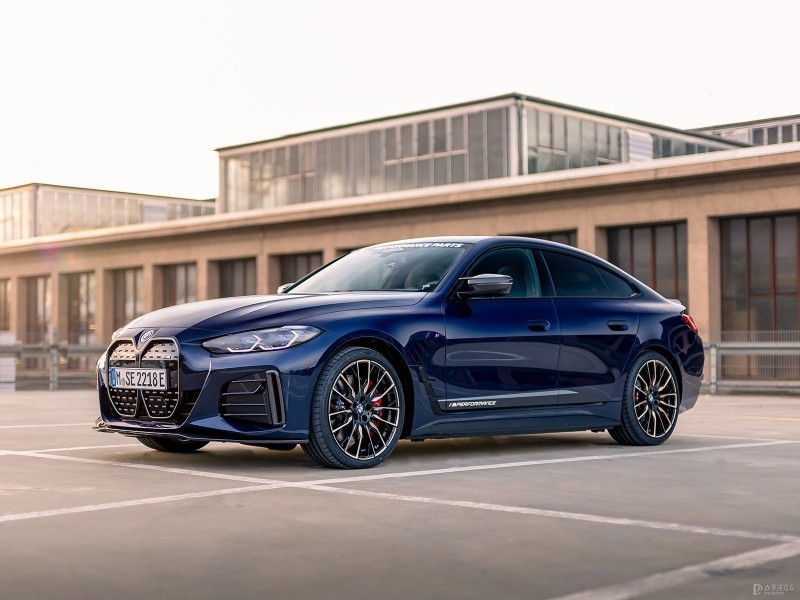
The Brand-new BMW i4 and MINI ACEMAN will Make their Global Debut at the Beijing Auto Show
Kevin WongApr 9, 2024

Neue Klasse platform's first mass-produced vehicle, the all-new BMW iX3 makes its debut, looks just like a concept car
LienSep 8, 2025

BMW X5 will become BMW's first model equipped with a hydrogen fuel cell, with a range of 504 kilometers
JamesSep 8, 2025

BMW's all-new iX3 to be unveiled on September 5, built on the Neue Klasse platform
Kevin WongSep 1, 2025
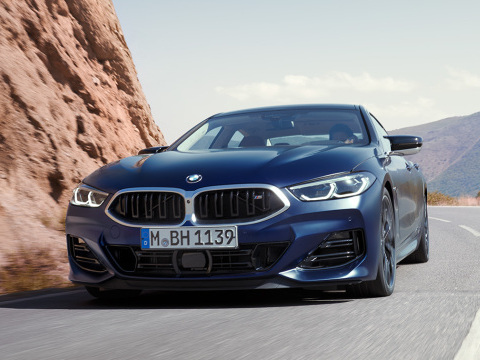
BMW to Debut Limited-Edition 8 Series at Monterey Car Week
AshleyJul 31, 2025
View More






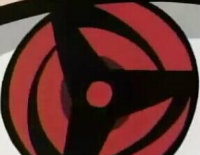



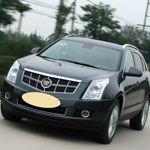
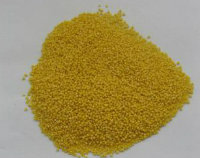





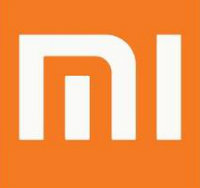
Pros
Cons